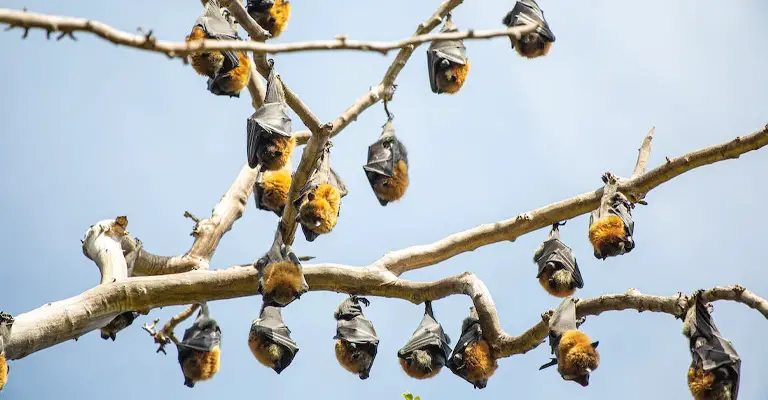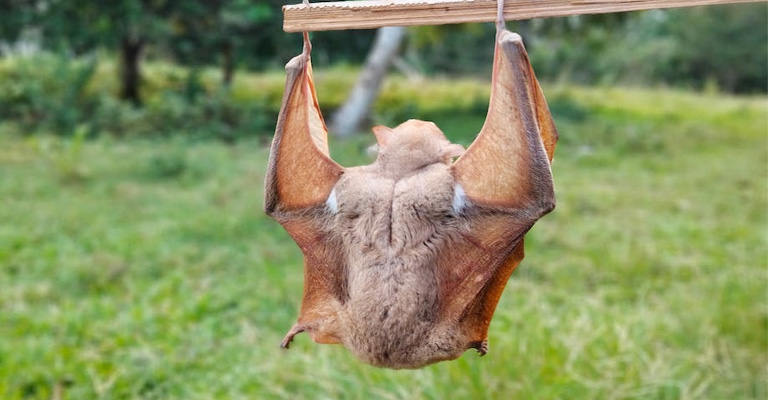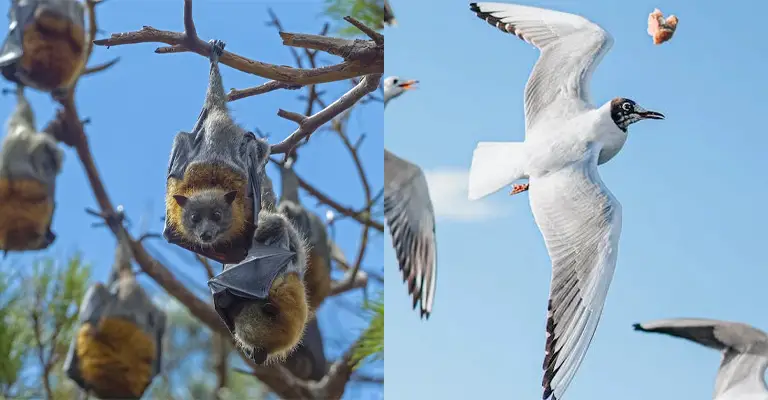The classification of organisms into distinct groups based on shared characteristics has long been a fundamental aspect of biological study.
The question of whether a bat is an animal or a bird has intrigued both scientists and enthusiasts alike, delving into the intricacies of taxonomy and evolutionary biology.
Bats and birds, despite their distinct appearances, exhibit similarities and differences that challenge conventional categorization. This debate highlights the complexity of the natural world and the need for a nuanced understanding of how species are organized and related.
By examining is the bat an animal or a bird, we can unravel the mystery behind their classification and gain deeper insights into the evolutionary pathways that have shaped these remarkable creatures.

Is The Bat An Animal Or A Bird?
The bat is an animal, not a bird. Bats belong to the class Mammalia, which includes animals that have hair, produce milk, and give birth to live young.
Birds belong to the class Aves, which includes animals that have feathers, lay eggs, and have a beak.
Bats and birds differ in several aspects, such as:
Wings
Bats have wings that are made of thin skin stretched over their fingers and arms. Birds have wings that are made of feathers attached to their bones.
Bats can maneuver more agilely in flight than most birds, but birds can fly faster and for longer distances.
Echolocation
Bats use echolocation to navigate and find prey in the dark. They emit high-frequency sounds and listen to the echoes that bounce back from objects.
Birds do not use echolocation, but some birds, such as owls, have excellent vision and hearing to hunt at night.
Diet
Bats eat a variety of foods, depending on the species. Some bats are insectivores, meaning they eat insects. Some bats are frugivores, meaning they eat fruits. Some bats are nectarivorous, meaning they eat nectar from flowers.
And some bats are carnivores, meaning they eat other animals, such as fish, frogs, mice, or even blood. Birds also have diverse diets, but they usually eat seeds, insects, worms, fish, or small mammals.
Habitat
Bats are found almost everywhere in the world except for extremely cold regions. They usually roost in caves, trees, buildings, or other dark places during the day and come out at night to feed.
Birds are also widespread, but they tend to prefer warmer climates and open spaces. They usually nest in trees, bushes, cliffs, or artificial structures and are active during the day.
Bats and birds are both fascinating animals that have adapted to their environments in different ways.
They share some similarities, such as having wings and being vertebrates (animals with a backbone), but they are more different than alike. Bats are mammals, and birds are aves.
What Class Of Animal Is A Bat In?

A bat is a mammal, which is a class of animals that have hair, produce milk and give birth to live young.
Mammals are one of the six major classes of animals, along with birds, reptiles, amphibians, fish, and invertebrates.
Mammals are distinguished by several features, such as:
Hair
Mammals have hair or fur on their bodies, which helps them regulate their body temperature and provides insulation.
Hair can also serve other functions, such as camouflage, sensory perception, or communication. Bats have hair on most parts of their bodies, except for their wings and ears.
Mammary Glands
Mammals have mammary glands that produce milk to nourish their young. Milk contains nutrients, antibodies, and hormones that help the offspring grow and develop.
Bats have two pairs of mammary glands, one on the chest and one on the abdomen.
Placenta
Most mammals have a placenta, which is an organ that connects the developing embryo to the mother’s uterus.
The placenta allows the exchange of oxygen, nutrients, and waste products between the mother and the fetus. Bats have a placenta that varies in shape and complexity depending on the species.
Diaphragm
Mammals have a diaphragm, which is a muscle that separates the chest cavity from the abdominal cavity.
The diaphragm helps mammals breathe by contracting and relaxing to create a pressure difference that moves air in and out of the lungs. Bats have a diaphragm that is adapted for flight by being thin and flexible.
Endothermy
Mammals are endothermic, which means they can generate their own body heat and maintain a constant internal temperature.
Endothermy allows mammals to be active in different environments and climates. Bats are endothermic, but some species can lower their body temperature when they are inactive or hibernating to save energy.
Bats are mammals that have evolved to fly by modifying their forelimbs into wings.
They are the only mammals capable of true and sustained flight. Bats are also remarkable for their ability to echolocate, which is to use sound waves to navigate and find prey in the dark.
Bats are very diverse and widespread, with over 1,400 species found in almost every part of the world.
What Is The Difference Between A Bat And A Bird?

The bat and the bird are two different types of animals that have some similarities and differences.
Some of the main differences are:
Classification
The bat is a mammal, which means it has hair, produces milk, and gives birth to live young.
The bird is an avian, which means it has feathers, lays eggs, and has a beak. Bats and birds belong to different classes of vertebrates (animals with a backbone).
Wings
The bat has wings that are made of thin skin stretched over its fingers and arms. The bird has wings that are made of feathers attached to its bones.
Bats can maneuver more agilely in flight than most birds, but birds can fly faster and for longer distances.
Echolocation
The bat uses echolocation to navigate and find prey in the dark. It emits high-frequency sounds and listens to the echoes that bounce back from objects.
The bird does not use echolocation, but some birds, such as owls, have excellent vision and hearing to hunt at night.
Diet
The bat eats a variety of foods, depending on the species. Some bats are insectivores, meaning they eat insects.
Some bats are frugivores, meaning they eat fruits. Some bats are nectarivorous, meaning they eat nectar from flowers.
And some bats are carnivores, meaning they eat other animals, such as fish, frogs, mice, or even blood. Birds also have diverse diets, but they usually eat seeds, insects, worms, fish, or small mammals.
These are some of the main differences between a bat and a bird.
FAQ
No, a bat is not a bird. Bats belong to the mammalian class, distinct from birds. Despite their similar flying abilities, bats are warm-blooded animals that nurse their young with milk, a hallmark of mammals.
Bats possess mammalian characteristics, such as giving birth to live young and having fur, features absent in birds. While they both can fly, bats’ wings are modified forelimbs, while bird wings are formed from feathers.
Bats belong to the class Mammalia. They are part of the order Chiroptera, which includes over 1,400 species, making them the second-largest order of mammals after rodents.
Yes, there are some superficial similarities due to convergent evolution, such as the ability to fly and the presence of wings.
However, these similarities are the result of adapting to similar ecological niches, not shared ancestry.
Bats and birds are not closely related. Birds are descended from theropod dinosaurs, while bats belong to the same mammalian lineage as humans.
Their ability to fly evolved separately, showcasing the diverse solutions that evolution can produce in response to similar challenges.
Conclusion
In the quest to understand the classification of bats as animals or birds, we are reminded of the ever-evolving nature of scientific knowledge.
While traditional classifications based solely on superficial characteristics can be misleading, a more holistic approach, considering genetic, anatomical, and ecological factors, is necessary.
Bats, despite their aerial prowess reminiscent of birds, are unequivocally mammals, sharing a common ancestor with us.
This distinction underscores the importance of adopting a comprehensive and evidence-based perspective on categorizing the diversity of life on Earth.
The debate surrounding the bat’s identity serves as a testament to the intricate interconnectedness of species and the continuous refinement of our understanding of the natural world through scientific exploration.